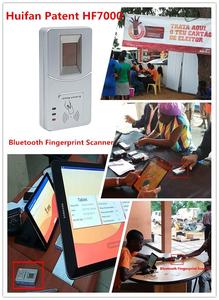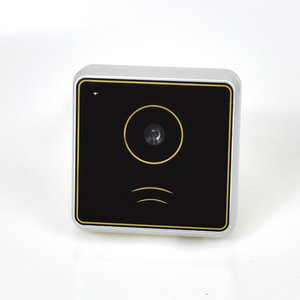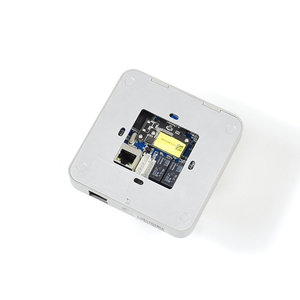(7302 products available)


























































































































































































































Wireless card readers come in different types. Each type is suitable for various scenarios when handling multiple SD, micro SD cards, and compact flash card data. There are three main ones; a built-in wireless card reader, external wireless card readers, and built-in internal wireless card readers.
Buyers can access external wireless card readers that connect via USB. Though these require plugging into a device, the reader itself operates wirelessly. These are ideal options for people who like using their desktop computers or laptops. Also, they are great for anyone who consistently migrates data across multiple devices.
Some laptops and tablets incorporate a built-in wireless card reader. Therefore, one does not need extra equipment when transferring files from an SD card. This option is convenient for those who prefer a more streamlined approach. Also, it benefits those who are constantly on the go and do not have space for additional gadgets.
These are compact devices that one connects to via a USB port. They are especially convenient for desktop users. They allow easy and quick access to the SD card without any hassle of wired connections. External readers also tend to be faster than integrated ones.
There are several key factors to consider when choosing a wholesale wireless micro sd card reader. People should select one based on the requirements of their consumers and the scenarios in which they will utilize them.
The first thing that should come to mind is what type of device the reader will be used on. For example, is it a phone, camera, laptop, or tablet? Buyers should ensure they get a reader that supports various card formats. These formats may include SD, micro SD, and CF.
Speed is another critical factor. Data transfer speed matters, especially for those consumers who work with large files. This is for photographers, videographers, and content creators. There are card readers with faster transfer rates than others. Selecting a reader with such rates ensures efficient data handling. Additionally, opting for one that supports UHS (Ultra High-Speed) technology enhances performance.
The size and weight of the card reader are essential, especially for customers who travel frequently or manage on-the-go operations. There are compact and lightweight ones that fit easily into a pocket or camera bag. It ensures that users can carry the device without adding much bulk or weight.
Most users who frequently travel prefer wired connections due to their speed and stability. On the other hand, those managing multiple devices tend to wireless connections for their convenience. It is always good to know each option's benefit and drawback to ensure one makes the right choice for their consumers.
Wireless card readers have diverse applications across several industries. Here are a few of those industries.
Wireless card readers for tourists help them transfer photos and videos from their cameras or phones to cloud storage or personal devices. This is especially important for individuals who enjoy sharing their travel experiences in real time. In the hospitality sector, hotel staff must quickly handle large volumes of data. They may transfer card photos for guests and manage systems for inventory.
In this industry, professionals require efficient ways to transfer large media files. They can do this using card readers that wirelessly transfer files from camera cards to computers. This enables faster editing and sharing without the hassle of carrying multiple cables. For video content creators, transferring 4K or 8K videos requires a reader that can handle large files quickly.
Just like in any other situation, IT professionals deal with a lot of data. They often use these readers to manage large volumes of card-based data backups. For those who work in data centers, they need robust and efficient readers. In the tech industry, performance and security are critical. Therefore, high-speed readers with encryption capabilities are usually preferred.
Educational institutions manage large amounts of media content. Thus, they usually require wireless card readers that support bulk transfers. These readers quickly move educational videos, images, and projects from cards to central storage systems. This efficient data management is crucial for keeping multimedia content accessible.
Real estate agents and brokers rely on photos and videos to market their properties. They often utilize compact wireless SD card readers to transfer these media files quickly. Most users need readers that can handle high-resolution files for an efficient marketing strategy.
A compact SD card reader supports multiple card formats. These formats may include SD, micro SD, and CF cards. Some advanced readers can also support USB drives and OTG (On-The-Go) functionality. For connectivity, most models utilize Wi-Fi or Bluetooth. These methods enable seamless pairing with other devices like smartphones, tablets, or computers.
Fast data transfer speeds
Most efficient models support UHS (Ultra High Speed) standards. It ensures that large files like 4K videos or extensive photo batches transfer quickly and securely.
Most wireless readers enable users to transfer data without needing cables. It is especially convenient for those who frequently travel or work in the field. Many of these readers utilize Wi-Fi or Bluetooth to connect seamlessly with devices.
Wireless readers tend to be compact and lightweight. It makes them easy to transport, especially for professionals who are always on the go. One can quickly slide the reader into a pocket or camera bag, ensuring quick access whenever needed.
The first step is to identify the type of card they wish to use. The card is then inserted into the corresponding slot of the SD card wireless reader. The next step is to connect the reader to a device like a smartphone or tablet. Most readers have an accompanying app that facilitates this wireless connection.
For cloud transfers, users must set up an account with the reader's app. After doing so, they can begin transferring files directly from their cards to the cloud without needing additional storage space on their devices. The data can also be transferred to local storage to maximize efficiency.
For card readers that use wireless connectivity, it is advisable always to check for firmware updates inc. The updates boost functionality, improve speed, and ensure compatibility. Additionally, they often enhance security features, important for users managing sensitive data. Keeping the device charged during regular operations is advisable. Running it on low battery causes slower transfer speeds and potential interruptions.
Card readers withstand constant card insertion and removal. This wear can lead to malfunctioning slots over time. Users should carefully insert and eject cards to avoid damaging the internal components. Additionally, storing the device in a protective case when not in use prolongs its lifespan.
A1. The main advantage is the wireless functionality. The operation makes it easy to transfer files without dealing with the hassle of wires. In addition, they are compact. Hence, they can easily fit into a laptop bag and are relatively portable.
A2. They have Usain standard speeds. Therefore, they can easily accommodate such high-resolution transfers. Users should consider the reader's speed ratings before making a purchase to ensure optimal performance.
A3. Most readers have a wide range of compatibility. They usually support various devices, from cameras and smartphones to laptops and tablets. However, it is still important to check the specifications to ensure seamless integration.
A4. The main difference is efficiency. The wired ones have higher data transfer rates than the wireless ones. That is why they are ideal in large-scale enterprise environments. On the other hand, wireless readers offer more convenience and flexibility.
A5. Yes, that is one of the features of wireless readers. They come with multi-device connectivity options. This allows users to transfer and even share content across several devices at the same time.